Out of the roughly 2,500 wild mushroom species in Michigan, approximately 100 of them are edible. Morels, chanterelles, oysters, chicken of the woods, and truffles are the most popular edible species, but Michigan mushroom hunters know that there are more gems to discover.
7 Edible Mushrooms in Michigan
1. Morel (Morchella species)
Morels can be yellow, tan, black, or gray. They are most notably known for their unique cap. The pitted cap is oblong and veiny, almost resembling a crumpled-up honeycomb. If you look hard enough, you can find morel mushrooms in all 83 counties in Michigan.
When to look for morels?
Morels often appear after periods of rainfall, and the best time to harvest morels in Michigan is in May, even though this species fruits from April to June.
The optimal soil temperature for morel growth is generally between 50°F and 60°F (10°C to 15°C).
What Are You Foraging For Right Now?
We're thrilled to hear your ideas. What would you like to submit today? Feel free to share your thoughts and experiences with us.
Where to find them?
They can be found just about anywhere but prefer woodland areas with moist soil, old orchards, and dead or dying trees. Look for them around trees such as oaks, maples, elms, and ash.
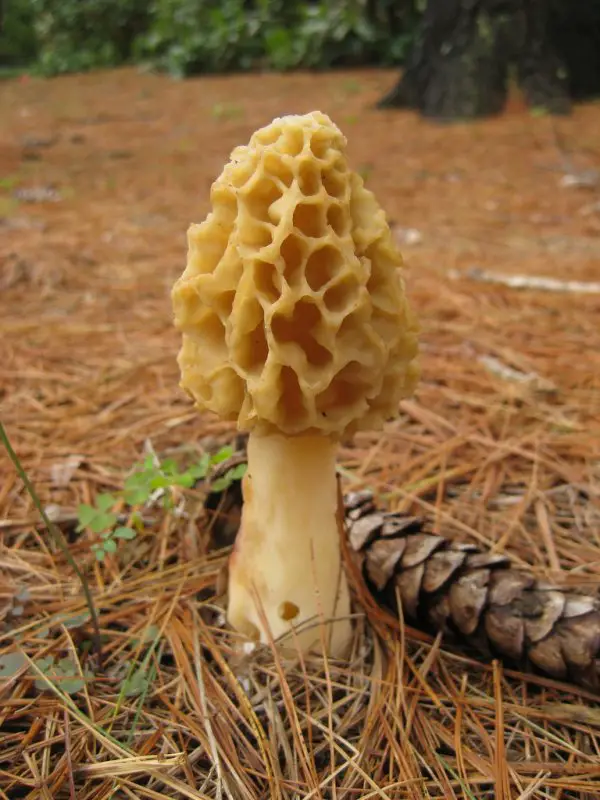
Morels have a meaty texture and an earthy, nutty taste. The darker morels tend to have a smoky flavor, also. Their flavor is something to be showcased.
They are great sauteed in butter but also work well as an ingredient. Think pasta, mushroom soup, sauces, or even morel game burgers.
I recommend the following recipe:
- Morel game burger with charred scallion butter
Watch our video to learn all about how to find, forage, and identify morel mushrooms!
2. Chanterelle (Cantharellus species)
The golden chanterelle and the cinnabar red chanterelle are two popular species in Michigan. They are vase-shaped and have deep, false gills on the underside of the cap. Chanterelles are well-known for their fruity apricot scent.
When to look for chanterelles?
July and August are the most bountiful months for harvesting these mushrooms.
Where to find them?
Explore the northern parts of the Lower Peninsula and the Upper Peninsula. Because chanterelles are mycorrhizal, you will always find them near trees, especially around oaks, beech, and maples.
Check for them a day or two after a good rain when the soil is moist.
Watch our video on when and where to look for chanterelles.
These unique mushrooms have a slightly peppery and fruity flavor without the sweetness.
Sauteed chanterelles are a great side dish, but you can also use them in risotto, on toast, in pasta, or to add a slight sweetness to meat dishes.
I recommend the following recipe:
3. Oyster (Pleurotus species)
Although this species is easily cultivated, foraging it yourself is much more exciting. The white-light brown cap of the mushroom is smooth and oyster-shaped. They have decurrent gills and grow in a shelf-like formation on wood, usually overlapping each other.
When to look for oysters?
Look for them in April and May, or September and October, especially after rainfalls.
Where to find them?
They grow on many hardwood trees, especially oaks, maples, beech, and other hardwoods. Oyster mushrooms often grow on the trunks or branches of living and dead trees.
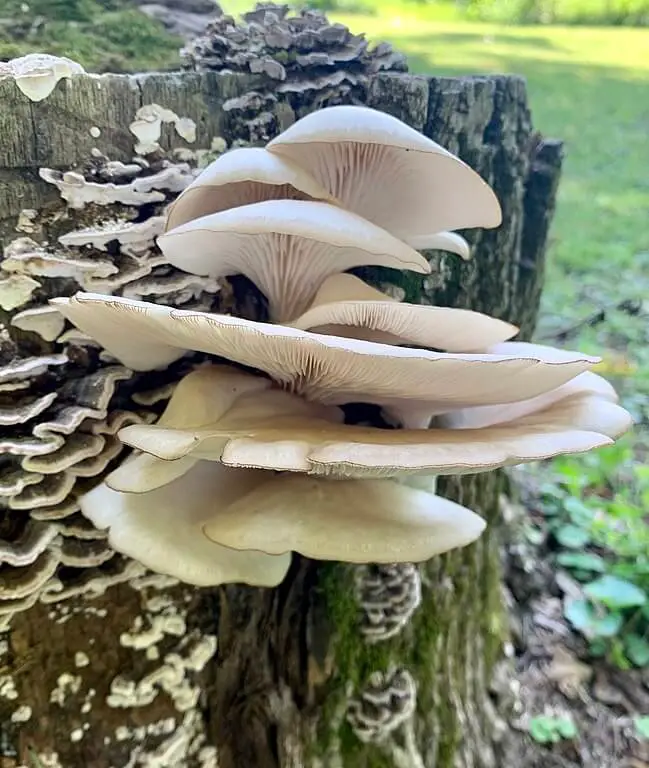
Even though they have a strong anise/licorice scent, their flavor is subtle and earthy, with only a hint of anise.
Their texture is meaty yet soft, similar to shitake mushrooms. You can fry, bake or sauté oyster mushrooms, or even use them to make your own version of Korean barbecue.
I recommend the following recipe:
- Korean barbecue crispy oyster mushrooms
4. Chicken of the Woods (Laetiporus species)
Chicken of the woods grows in shelves between two and ten inches wide. They range from a sulfur-yellow color to a bright orange color. The exterior is soft and smooth and releases a yellow liquid when pressed.
When to look for chicken of the woods?
From May to September. You may have better luck finding them after periods of rainfall or in areas with higher humidity.
Where to find them?
This species is usually found on oak trees, but you can also find it on other trees, including the poisonous yew tree (do not eat the mushroom from this tree). It is a saprobic fungus and typically grows at the base of dead wood in the summer and fall.

Chicken of the woods can cause severe gastrointestinal discomfort if eaten raw. Once cooked, it is meaty and juicy. It tends to absorb the other flavors in a dish and could pass for chicken when mixed into a recipe.
You can use this wild mushroom to make sandwiches, fried “chicken,” teriyaki dishes, or boneless buffalo “wings.”
I recommend the following recipe:
5. Michigan Truffle (Tuber species)
This truffle is firm with a brick red exterior and small warts covering its surface. The interior is dark colored with off-white veins. It has a sweet but slightly musty odor.
When to look for truffles?
The best time to harvest these truffles is between August and November. If the mushroom feels slimy, it is overly mature.
Where to find them?
You can usually find this species growing near oak and sometimes pine and spruce trees. Most foragers enlist the help of a truffle dog to sniff them out.
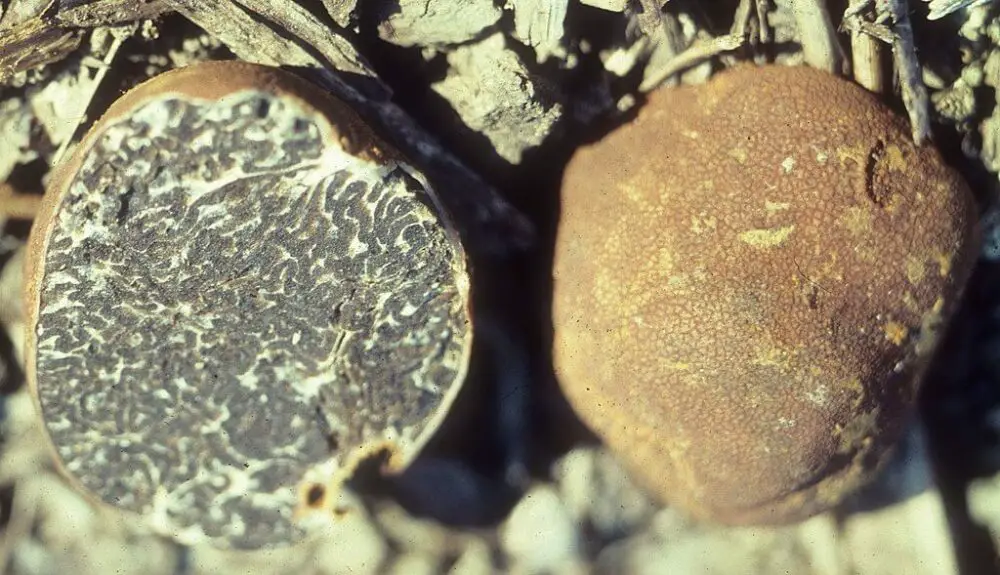
The flavor of the truffle is similar to the smell – sweet and musty. Truffles are mainly used as a garnish and are not usually cooked.
The Michigan truffle is an exquisite addition to many dishes, including pasta, potatoes, and soups.
I recommend the following recipe:
6. Honey Mushrooms (Armillaria mellea)
The cap varies in color from light brown to dark orange-brown and is usually convex when young, flattening out with age. The gills are closely spaced, white. They are known to form large colonies, often causing a white mycelial mat at the base of the infected tree.
When to look for honey mushrooms?
Honey mushrooms typically fruit in the late summer to fall, with the peak season often occurring from August to October.
Where to find them?
Look for areas where there is a combination of both coniferous and deciduous trees (oak, maple). Check around the bases of living or dead trees, as well as tree stumps.
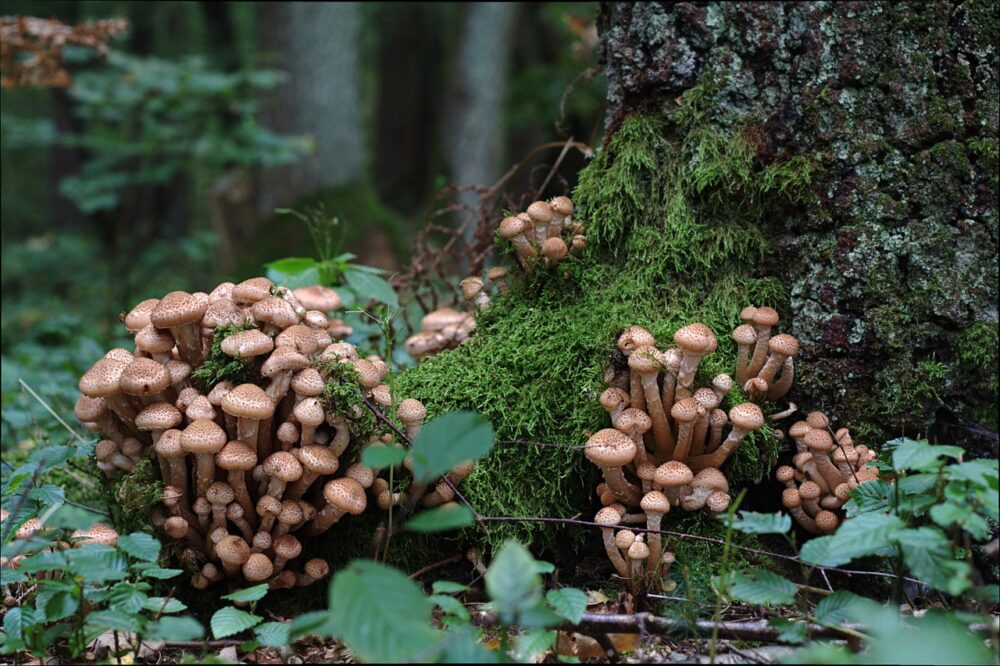
Honey mushrooms have a mild, somewhat nutty flavor. The texture is firm and somewhat meaty. They can be sautéed, stir-fried, added to soups or stews.
I recommend the following recipe:
7. Lobster Mushrooms (Hypomyces lactifluorum)
The Lobster mushroom is characterized by its vibrant and striking orange to red exterior, resembling the shell of a lobster.
When to look for lobster mushrooms?
Their peak season is from August to October.
Where to find them?
Look for them in areas with oak, maple, and other deciduous trees. They can also be found in mixed woodlands where there is a combination of both coniferous and deciduous trees.
Lobster mushrooms are parasitic and grow on certain host mushrooms, particularly those in the genera Russula and Lactarius. Keep an eye out for these host species, as lobster mushrooms may be nearby.
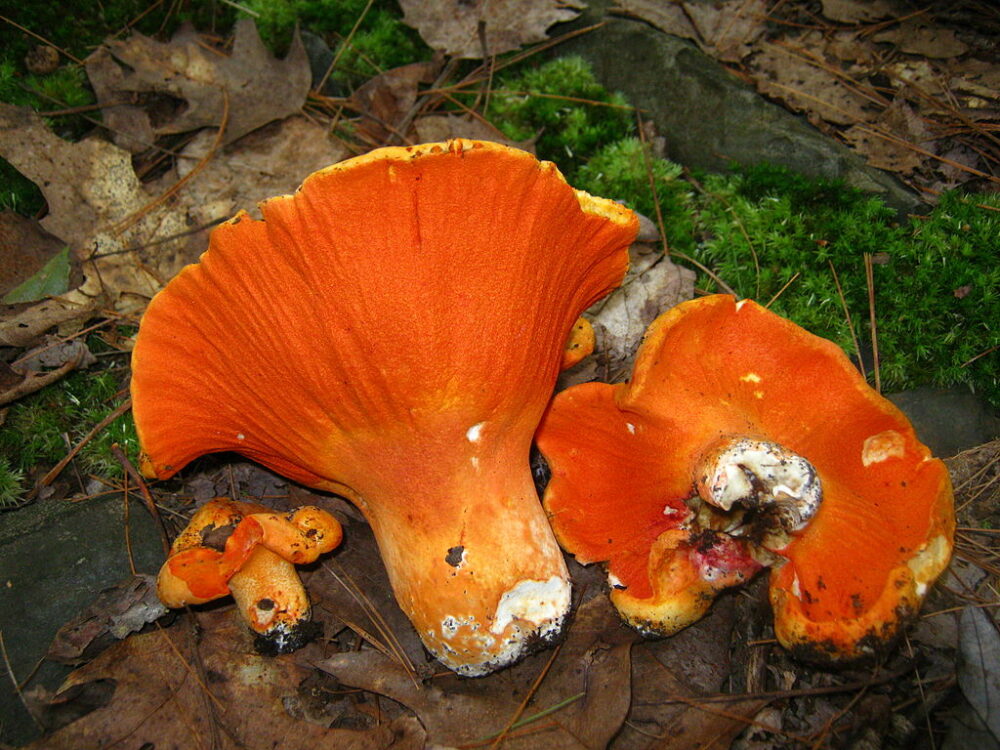
Lobster mushrooms are known for their distinctive seafood-like flavor, resembling the taste of lobster or crab. The texture is firm, dense, and meaty.
They respond well to sautéing or stir-frying, enhancing their meaty texture and concentrating their distinctive flavor. They can also be added to soups.
I recommend the following recipe:
4 Poisonous Mushrooms to Avoid in Michigan
1. False Morel (Gyromitra species)
False morels are different colors than true morels. They are usually red, purple, or brown.
Instead of having a honeycomb appearance with pits, the false morel has a cerebral appearance. It is wrinkled and has many folds.
Some people eat false morels without an issue. However, the toxins can build up in your body over time and cause severe damage in the future.
Eating these mushrooms can cause gastrointestinal problems, muscular coordination loss, and death.
2. Eastern Jack O’Lantern (Omphalotus species)
This species is a dangerous look-alike of the chanterelle mushroom. While both can have a bright orange color, rumor says that the jack o’ lantern glows in the dark.
Some of the most notable differences are that jack o’ lanterns grow on wood, usually in clusters, and have orange flesh.
This mushroom species is not known to cause death. However, it does cause nausea, headaches, vomiting, and diarrhea.
Check our video on the 7 most poisonous mushrooms growing in the US (mushroom details and ingestion symptoms included)!
3. Eastern Destroying Angel (Amanita species)
This mushroom is found in deciduous and coniferous forests. It has a smooth white cap, crowded gills not attached to the stalk, and a bulbous base. It usually grows along the edges of woodlands or in hardwood and oak forests.
It causes vomiting, nausea, and diarrhea. As the toxins spread, it causes cellular necrosis, leading to liver failure and death.
4. Autumn Skullcap (Galerina species)
This small brown poisonous mushroom looks similar to multiple edible mushrooms. It has a smooth cap with brown gills and a rusty-colored spore print. What sets it apart is that it almost only grows on decaying conifer trees.
The autumn skullcap has deadly amatoxins that can cause vomiting, diarrhea, liver damage, hypothermia, and death.
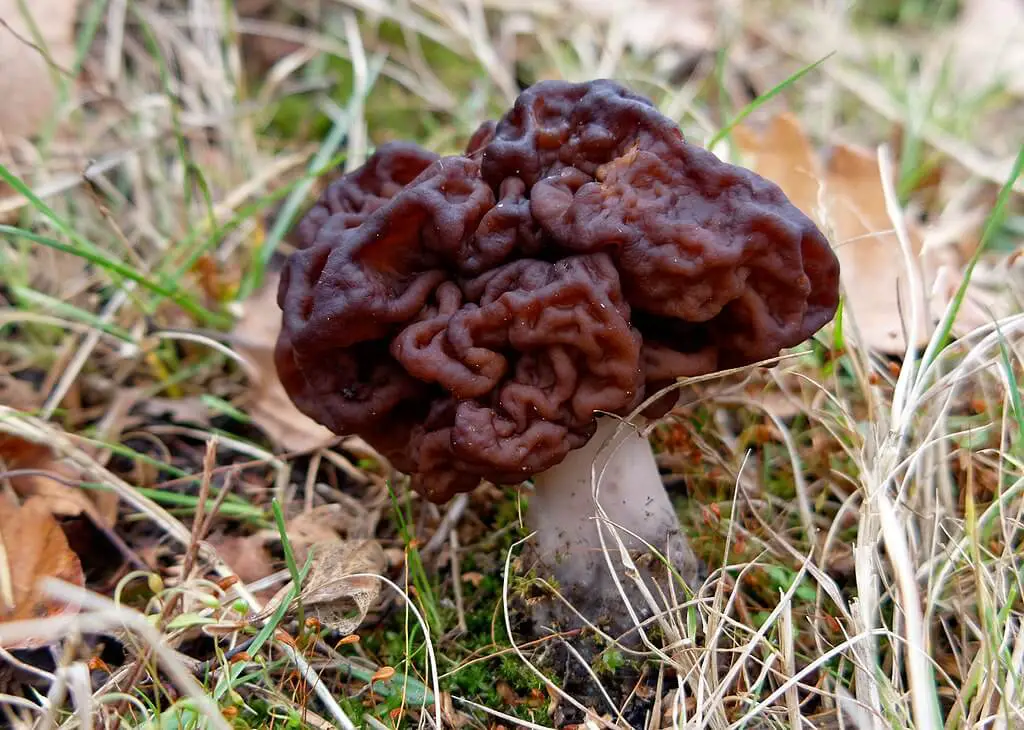
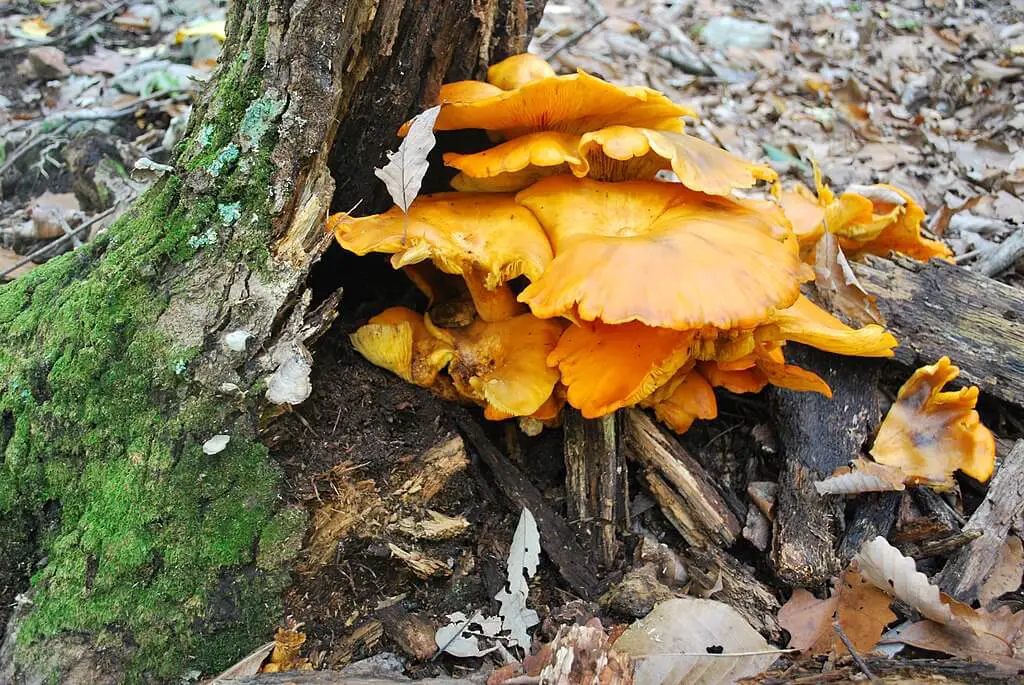
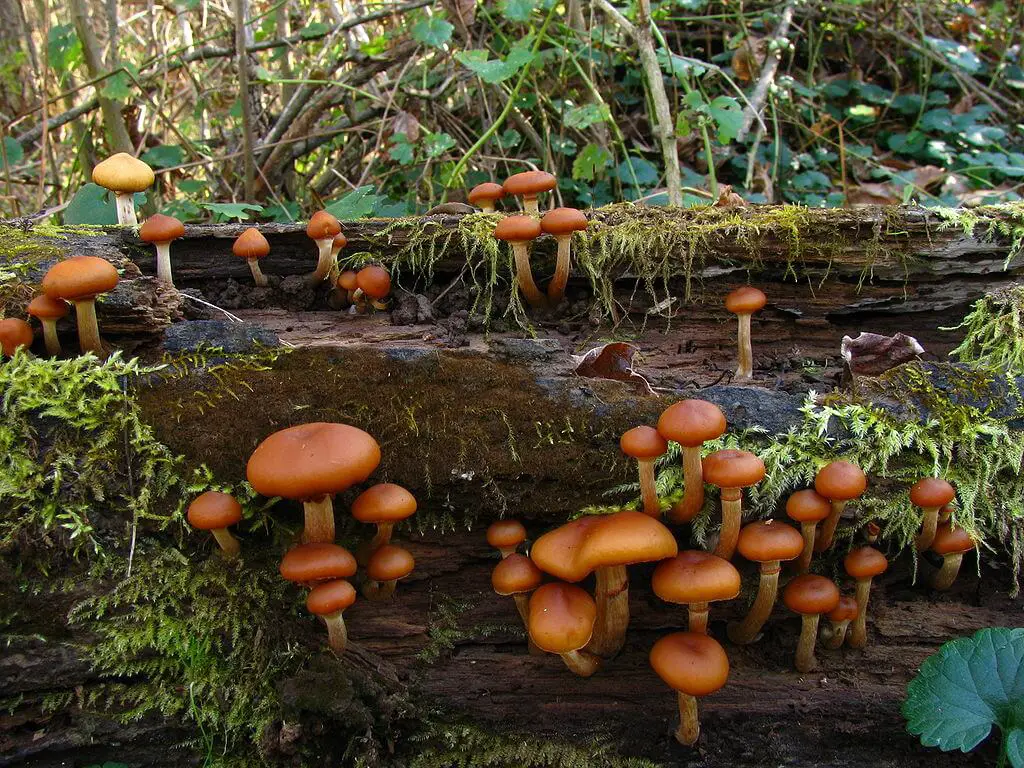
Magic Mushrooms in Michigan
Psilocybin mushrooms, also known as magic mushrooms or shrooms, are mushroom species with psychedelic properties. They cause hallucinations that affect the consumer’s auditory, visual, and emotional senses.
Some groups have used them in religious rituals for over 6,000 years. While some people consider them dangerous drugs, other researchers have discovered their medicinal use. Shrooms are a possible treatment for depression and anxiety.
A petition to decriminalize psychedelic substances has been making its rounds statewide. In the state of Michigan, there are at least twelve species of magic mushrooms.
In 2020, Ann Arbor was the first city to decriminalize these substances, followed by Hazel Park City and Detroit.
While it is still considered illegal, both federally and in the state, arrests and investigations are highly unlikely.
The most common magic mushrooms in Michigan include:
- Amanita muscaria var guessowii, aka fly agaric
- Gymnopilus luteus, aka yellow gym
- Psilocybe caerulipes, aka blue foot
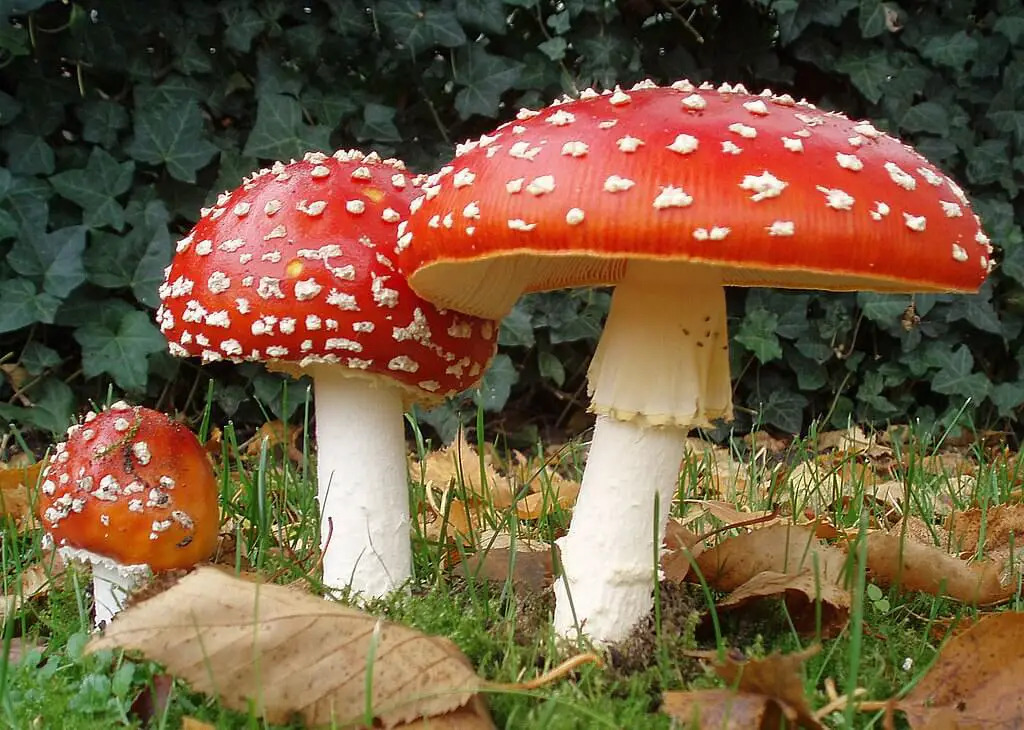
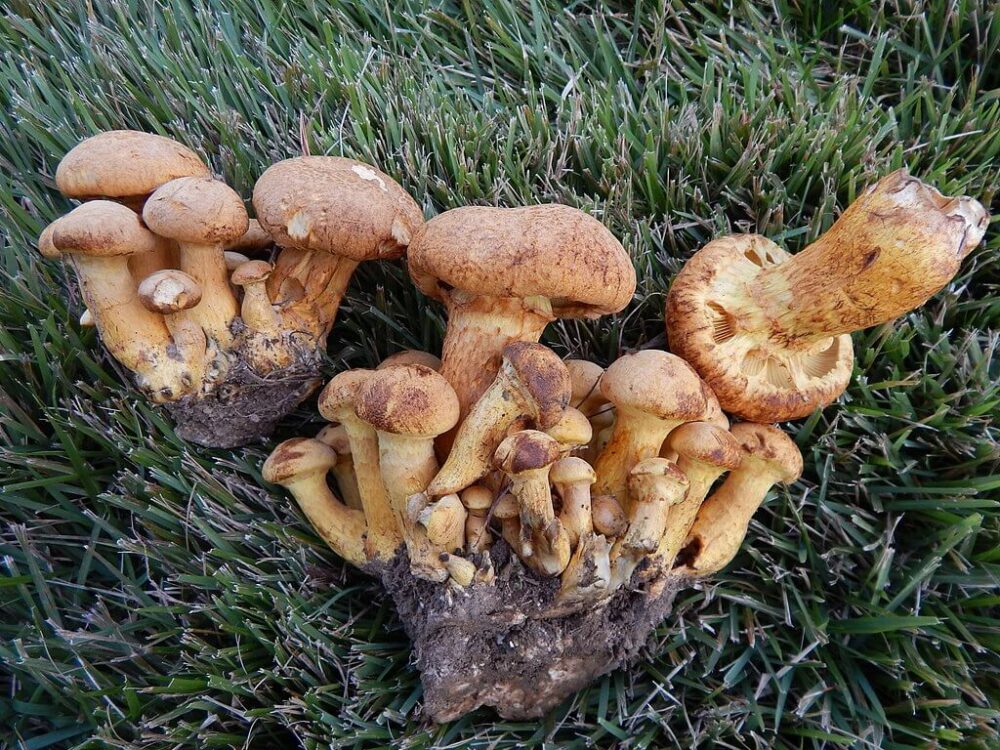
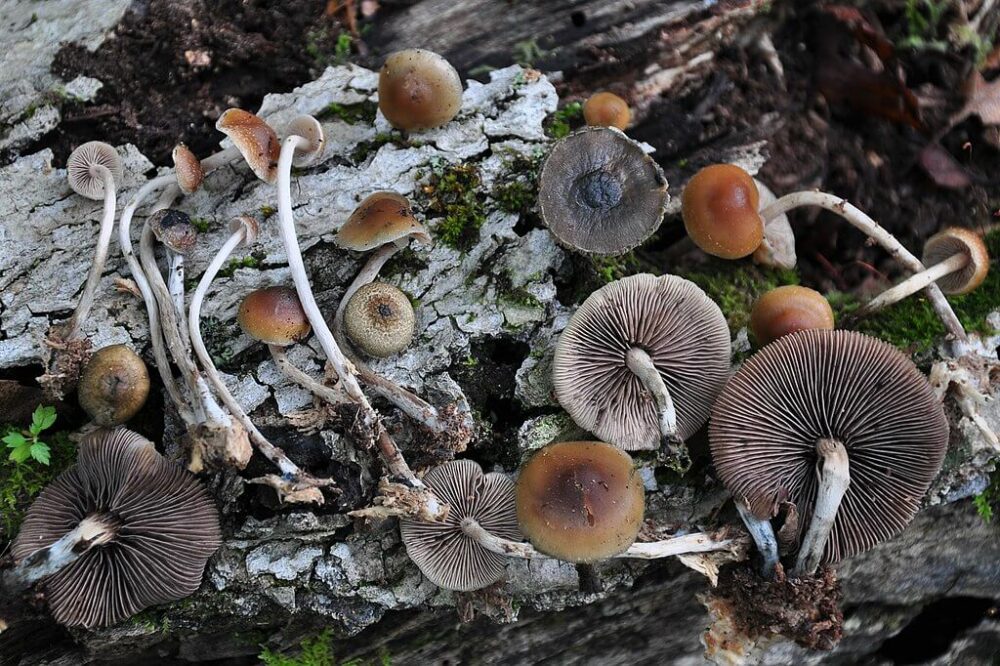
Our Mushroom Foraging Tips
- Bring the correct gear. At the very least, you should bring a basket, a knife, and a trowel. A mushroom identification guide is also handy.
- Do not eat anything unless you are 100% sure of what it is.
- Know precisely what you’re looking for and which season it grows in.
- Only take what you will eat.
- Learn how to take a spore print.
- Cut the mushroom, don’t pull it up from the ground.
Originally from Florida, but with a lust for travel, Sami has found herself in many remote areas with little-to-no access to traditional medicines. Since 2014, she has been experimenting with natural remedies, eastern medicine, and foraging. She believes that the Earth provides us with everything we need to live, heal, and cure.

